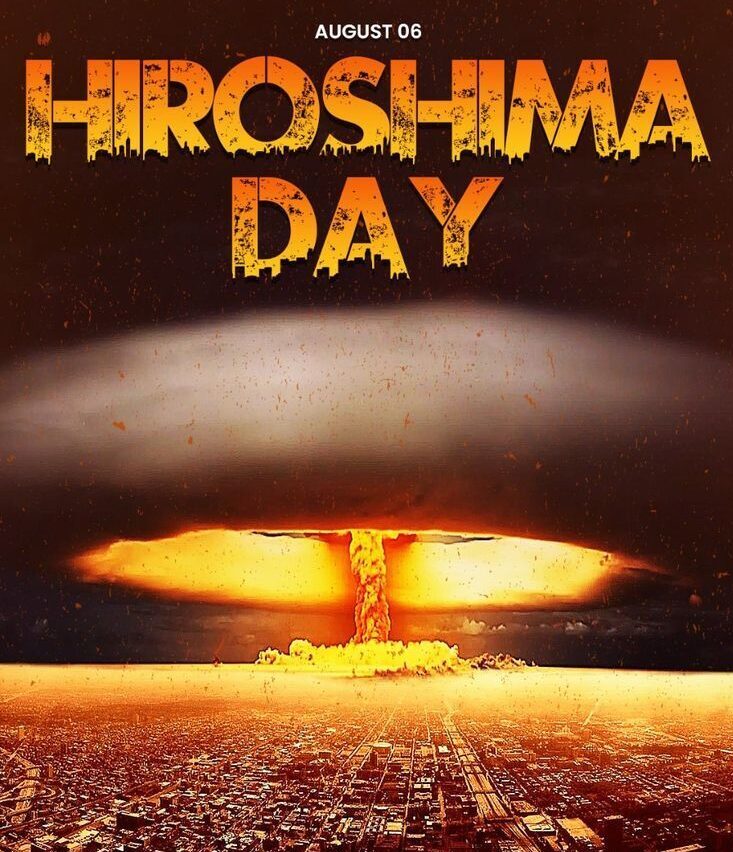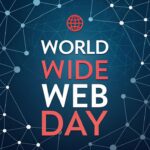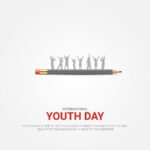Unforgettable Truths About Hiroshima Day That Will Break Your Heart and Awaken Your Soul
On August 6th every year, the world observes Hiroshima Day—a somber reminder of the devastating atomic bombing of Hiroshima in 1945, during World War II. This day is not just about mourning a tragic chapter in human history—it’s about remembering the human cost of war, promoting peace, and reinforcing the urgent call for nuclear disarmament.
Whether you’re a student, teacher, peace advocate, or simply someone with a heart, this article gives you an in-depth, human-centered journey into Hiroshima Day. We’ll explore its history, timeline, emotional facts, FAQs, global observance, and how it affects our lives even today.
🕊️ What Is Hiroshima Day?
Hiroshima Day, observed on August 6, marks the anniversary of the first atomic bomb dropped on the Japanese city of Hiroshima by the United States during World War II in 1945. The bombing resulted in over 140,000 deaths, leaving behind not just a destroyed city, but also a haunting legacy of radiation, trauma, and sorrow.
This day is observed globally as a symbol of peace, nuclear disarmament, and the resilience of humanity.
🕰️ A Look at the Heartbreaking History
➤ Before the Bomb
World War II was raging across continents. The Allied forces sought a way to bring the war to a swift end. Japan, though weakened, had not surrendered.
➤ August 6, 1945: The Day That Changed Everything
At 8:15 a.m., the U.S. bomber Enola Gay dropped the uranium bomb nicknamed “Little Boy” on Hiroshima.
It exploded about 600 meters above the city, unleashing destruction over 13 square kilometers.
80,000 people died instantly.
Thousands more succumbed later to burns, radiation, and injuries.
➤ Aftermath
The death toll reached 140,000 by the end of 1945.
Over 70% of the buildings were destroyed.
Survivors, known as Hibakusha, lived with the psychological and physical trauma for decades.
📅 Timeline of Events
| Date | Event |
|---|---|
| Aug 6, 1945 | Atomic bombing of Hiroshima |
| Aug 9, 1945 | Nagasaki bombed |
| Aug 15, 1945 | Japan surrenders, ending World War II |
| 1947 | Hiroshima Peace Memorial City plan initiated |
| 1954 | Hiroshima Peace Memorial Museum established |
| Every Aug 6 | Peace ceremonies held at Hiroshima Peace Memorial Park |
📌 7 Unforgettable Facts About Hiroshima Day
Hiroshima was chosen as the first target because it had not been bombed earlier, allowing the U.S. to assess atomic bomb damage accurately.
The atomic bomb used uranium-235 and had the force of 15,000 tons of TNT.
Black rain—radioactive rain—fell on the city hours after the blast, causing further damage.
The Genbaku Dome (Atomic Bomb Dome) still stands as a haunting ruin and UNESCO World Heritage Site.
Hibakusha faced social stigma and health problems for decades.
Hiroshima Day is also called “Peace Memorial Day” in Japan.
Every year, Japan holds a “Peace Declaration”, urging the world to eliminate nuclear weapons.
❓ FAQs About Hiroshima Day
Q1: Why is Hiroshima Day significant today?
It serves as a global reminder of the horrors of nuclear warfare and the need for global peace and disarmament.
Q2: Is Hiroshima still affected by radiation?
Radiation levels returned to normal levels within a few months of the bombing, but survivors suffered from long-term radiation-related illnesses.
Q3: What’s the difference between Hiroshima and Nagasaki Day?
Hiroshima Day is on August 6, marking the first atomic bomb drop. Nagasaki Day on August 9 commemorates the second bombing.
Q4: How is Hiroshima Day observed internationally?
Through peace marches, candlelight vigils, educational events, documentaries, art exhibitions, and prayers for peace.
🌎 How Is Hiroshima Day Observed?
In Japan:
Peace Memorial Ceremony held at Hiroshima Peace Memorial Park.
Reading of the Peace Declaration by Hiroshima’s mayor.
Offering of water to honor the victims who died crying for water.
Paper cranes are offered at the Children’s Peace Monument, inspired by Sadako Sasaki.
Globally:
Schools hold debates and peace education events.
Peace organizations conduct seminars and exhibitions.
Individuals light candles or share peace messages on social media.
💬 Heartfelt Wishes and Messages
“On Hiroshima Day, let us remember the cost of war and cherish the gift of peace.”
“May we never again witness such destruction. Peace is the only way forward.”
“Remembering Hiroshima is not about blame; it’s about ensuring it never happens again.”
“One city suffered so humanity would learn. Let us not forget Hiroshima.”
💡 Importance of Hiroshima Day in Our Lives
💔 Emotional Awareness
It instills a deep emotional understanding of the trauma that war causes—not just to soldiers, but to innocent civilians.
🎓 Education and Responsibility
It promotes peace education in schools and encourages young generations to understand the power and risks of technology.
🌐 Global Diplomacy
It reinforces the importance of global treaties, like the Treaty on the Prohibition of Nuclear Weapons (TPNW), to avoid a repeat of history.
🤝 Human Connection
It’s a reminder that human lives matter more than geopolitics. It nudges us toward empathy, peace, and mutual respect.
✨ Key Points to Remember
Hiroshima Day is about remembrance, not revenge.
It represents the failure of diplomacy and the consequences of unchecked military power.
Survivors’ voices are crucial in spreading awareness.
Peace is not passive—it’s a daily effort in actions and conversations.
Every individual has a role in fostering a peaceful world.
🌱 Impact on Daily Life and Society
For Students:
Sparks discussions on ethics in science, warfare, and international relations.
Teaches the importance of compassion and peace-building.
For Policymakers:
A call to ensure that nuclear policies reflect humanity, not hostility.
For Citizens:
Promotes tolerance, forgiveness, and the pursuit of dialogue over destruction.
For Society:
Fuels global peace campaigns, disarmament movements, and humanitarian cooperation.
🧠 Psychological Impact of Hiroshima
Hibakusha faced:
PTSD, survivor’s guilt.
Reproductive issues.
Social ostracism.
Depression and anxiety.
Understanding their stories reminds us to approach victims of any trauma with kindness and compassion.
🕯️ Hiroshima Peace Symbols
Origami Cranes: Inspired by Sadako Sasaki, a young girl who died from leukemia caused by radiation. She folded 1,000 cranes for peace.
Atomic Bomb Dome: A silent witness to history.
Peace Flame: It will remain lit until all nuclear weapons are abolished.
Peace Bell: Rang by visitors from around the world, wishing for global peace.
🌍 Significance in the Modern World
In a time where nuclear threats and global tensions remain, Hiroshima Day is more than just history—it’s a moral compass. It reminds us that:
No ideology justifies mass suffering.
Every nation must pursue peace, not power.
Technological advancement without ethics is dangerous.
📝 Conclusion: From Ashes to Awakening
Hiroshima Day is a haunting chapter in the book of humanity. But from the ashes of Hiroshima rose hope, resilience, and a global movement for peace.
Let August 6 not just be a day of remembrance—but a day of reflection, responsibility, and resolve. A day to reaffirm that we will never again allow such destruction to fall upon our world.
🕊️ Final Thought
“Let Hiroshima remind us: Peace is not a dream. It is a responsibility.”








